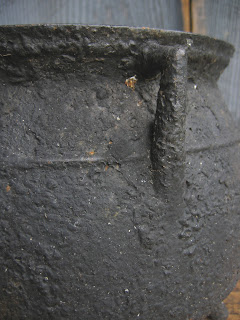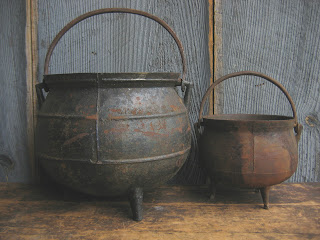

In the early morning, in the dark, on my way out for my antiquarian workday, I pass a very old and very small home perched overlooking the sea. There always is one small faint light on. Goody is up.
"Goody" stands for "good wife", a colonial New England title of respect for the mistress of a household but qualified as having humble social standing. Goody Coffin has always been called Goody even though her true name Mildred Jane Coffin and she is of… high social standing.
She is in her sixties. She lives alone. She taught kindergarten and still occasionally does. She has always "fished"; engaged in the coastal Maine seafood industry in a very small private way. A few lobsters. A few clams. A few crabs. An occasional fish. She never married but has a reservoir of mostly younger male fishing industry employed "suitors" who are "always around" (her words). By age fifteen she spent her days along the shore around these men. "Where there is diesel fuel there are men." has been her life long mantra. This free approach has kept her in various states of estrangement from her family, the family home and the community. She does not care.
She rises early, always in the dark. She goes to bed very late but I am never up then so cannot confirm this. She always has the one small light except for once a year. That single day is Halloween. At dawn of the day she puts a small carved jack-o-lantern with a candle outside before her door. It stays there, lighted, through the dawn of the following morning. I see it once a year. One year, on the way home, I actually stopped to visit. I tapped on her door as the rich holiday smell of the candle burning the jack-o-lantern filled my nostrils.
She greeted me with a little cackle, flashing blue eyes, a gesture to enter, an about face that swirled her rag cloak. A rich smell of wood smoke and burning stew struck me. She has a colonial fireplace the dominates her 1740's home and confronts the front door. One steps into Goody's fireplace kitchen when one steps into her home. The fire blazed. The driftwood logs crackled. And… her small witch type kettle simmered before this; just noticeably bubbling. Though no meat was burning, the smell suggested "something is".
I stop occasionally so am no irregular visitor. My motivations have become friendship… with that being as much of friendship as Goody will allow for… she "doesn't keep friends". My original effort was commercial. Goody's mother had finally died, Goody inherited and part of the inheritance is the colonial family homestead of seven generations on the main street of a Maine coastal village that is… full of antiques. Not only was she not going to "sell" the family homestead… or anything in this homestead… she locked it up and has left it "just as mother died" ever since. She keeps the lawn mowed, the leaves raked, the shutters from flapping and the old lace curtains drawn. "Appearances" she says and then turns her back, in fact, on the neighbors, the town and the selectmen who would prefer a less haunted home. To the antiques dealer, the home appears as colonial New England gold.
We made small talk. I commended her pumpkin. The smoke and burning smell intensified. I looked at her simmering kettle. She saw me do this. "A conjure" she said. "It's burning?" I said. "No. Bones, bat wings and toad's eyes" she said. The air became even heavier. Goody's witchcraft is well known.
Within this haze the oddest feature of Goody manifested. It is very hard to keep a clear view of her for she seems, as one chats, to change in age. She floats before you ever varying in appearance to appear to be… quite young, then, as one blinks at this, to be craggy and wretched with age and, blinking again, the Goody one knows. It is an uncomfortable haziness that does not abate. It encourages me to leave promptly. She seems to know all this and cackle softly while flashing her eyes. That Halloween eve visit was so bothersome that I have never returned on that day again and prefer only daylight visits.
Goody's actual haunt on me is very simple. She will break her lockdown rule and purloin a "treasure from mother's" for me to view, critique and appraise. Each is never for sale. That is fine for Goody knows little about antiques and has… poor taste and a bad art eye. Cheap Victorian porcelain figurines appeal to her eye. A framed oil painting on canvas of her great, great grandfather's clipper ship in a storm is ignored. This results in my always, at least, being aware of where she is at with her mother's estate… and that is good. I guess. The only horror to this haunt is that… Goody will take things from the estate and USE THEM and… these are often actually good and even …very fine… antiques. Currently she has purloined "a table" that she is dragging around her home and using as a sort catch all cooking counter top next to the fireplace. If it were not a… fine turned legged northern New England Sheraton two drawer sewing stand with two birdseye maple drawers and retaining the original old surface, undisturbed… I wouldn't care. As it is, she and it are driving me crazy.
That Halloween eve, I stumbled backward to the door in the burnt meat haze. Goody was pleased for she "has an evening full of trick & treats" she said. I asked, foolishly, "What are you giving out?" She paused, her eyes flashed. "Oh… little cups of my BROTH" she said. "It's made with bones, bat wings and toad's eyes".











































